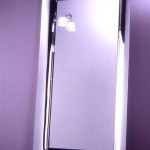How To Mirror Flip Screen Windows 10
Mirroring or flipping the display on a Windows 10 computer can be useful for various purposes, from presenting on a projected screen to adjusting the view for specific hardware configurations. This article will detail several methods to achieve this.
Method 1: Using Display Settings
This method is the most straightforward and readily accessible. It allows users to quickly flip the display horizontally or vertically.
1. Access the Display Settings. This can be done by right-clicking on the desktop and selecting "Display settings" from the context menu. Alternatively, users can search for "Display settings" in the Windows search bar.
2. Identify the correct display. If multiple displays are connected, ensure the desired display is selected in the "Display" dropdown menu within the Display settings.
3. Navigate to the "Scale & layout" section. This section contains the orientation settings.
4. Locate the "Display orientation" dropdown menu. This menu provides four options: Landscape, Portrait, Landscape (flipped), and Portrait (flipped).
5. Select the desired orientation. Choosing "Landscape (flipped)" will mirror the display horizontally, while "Portrait (flipped)" will mirror it vertically. The changes are applied instantly.
Method 2: Utilizing Graphics Card Control Panel
Most dedicated graphics cards offer control panels with more advanced display options, including screen rotation and mirroring. This method allows for finer control and may provide options not available through the standard Windows settings.
1. Access the graphics card control panel. This is typically achieved by right-clicking on the desktop. The control panel name varies depending on the graphics card manufacturer (e.g., NVIDIA Control Panel, Intel Graphics Command Center, AMD Radeon Software). If it's not visible in the context menu, try searching for it in the Windows search bar.
2. Navigate to the display settings within the control panel. The exact location and naming of these settings may vary based on the graphics card and its driver version. Look for options related to "Display," "Rotation," or "Orientation."
3. Locate the rotation or orientation settings. These settings typically offer a selection similar to the Windows Display settings, including options for landscape, portrait, and their flipped counterparts.
4. Select the desired orientation. Choose the flipped option to mirror the display. The changes should apply immediately.
Method 3: Employing Keyboard Shortcuts (Some Systems)
Some systems and graphics card drivers support keyboard shortcuts for screen rotation. While not universally applicable, these shortcuts can offer a rapid way to flip the screen.
1. Try the following key combinations: CTRL + ALT + Up Arrow, CTRL + ALT + Down Arrow, CTRL + ALT + Left Arrow, CTRL + ALT + Right Arrow. One of these combinations may rotate or flip the screen depending on the system configuration.
2. Check the graphics card documentation. If the standard shortcuts do not work, consult the documentation or online resources specific to the graphics card for information on supported shortcuts.
Troubleshooting
If the screen does not flip as expected, consider the following troubleshooting steps:
1. Verify correct display selection. Ensure the desired display is chosen in the display settings if multiple displays are connected.
2. Update graphics drivers. Outdated or corrupted graphics drivers can cause display issues. Update the drivers through the Device Manager or the graphics card manufacturer's website.
3. Restart the computer. A simple restart can resolve transient software conflicts that might be interfering with the display settings.
4. Check for third-party software conflicts. Certain third-party applications might override the display settings. Temporarily disable such applications to see if they are causing the issue.
Considerations for Multiple Displays
When using multiple displays, the flipping or mirroring operation applies only to the selected display in the settings. Each display's orientation can be controlled independently.
Alternative Mirroring Solutions
For specialized mirroring scenarios, such as projecting to a wireless display or capturing screen content, third-party applications may provide additional features and control beyond the built-in Windows functionalities.

How To Mirror Flip Your Display Updated For 2024

How To Mirror Flip Your Screen Without Using

6 Ways To Mirror Rotate And Flip On Windows 10 11 Fineshare

6 Ways To Mirror Rotate And Flip On Windows 10 11 Fineshare

6 Ways To Mirror Rotate And Flip On Windows 10 11 Fineshare
How To Flip A The Top 4 Easiest Ways With Pictures

6 Ways To Mirror Rotate And Flip On Windows 10 11 Fineshare
How To Rotate Screen On Windows 10 And Flip Pc Display
How To Rotate Screen On Windows 10 And Flip Pc Display

6 Ways To Mirror Rotate And Flip On Windows 10 11 Fineshare








